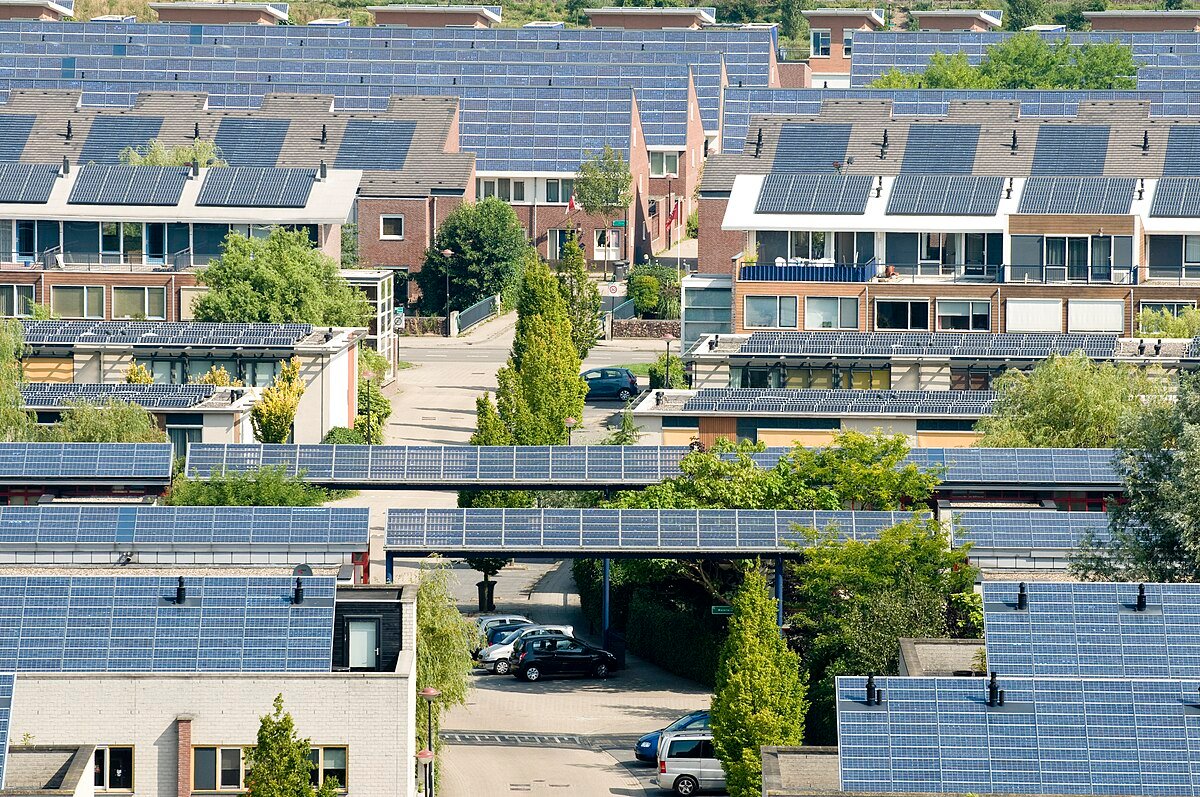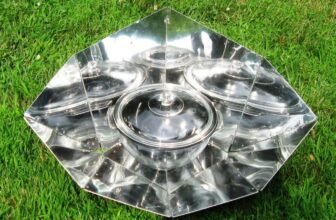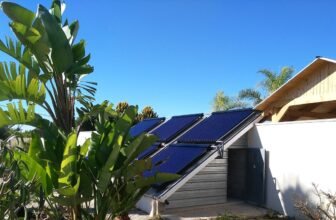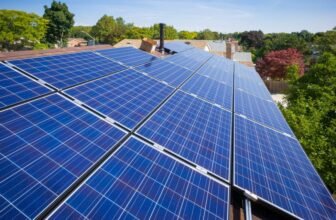
A Journey into Solar Living
When Jake and Maria bought their dream home on the edge of a small town in Arizona, they knew they wanted to make it as energy-efficient and environmentally friendly as possible. With two kids, a home office, central air conditioning, and the usual array of household appliances, their monthly electricity bill was hitting nearly $250 during the summer months.
That’s when they began looking into solar energy. What started as a way to save money quickly became a deep dive into kilowatts, inverters, batteries, and sun hours. The biggest question they had — and that many homeowners ask — was: How many solar panels are needed to power a house?
Let’s walk through their journey and answer this and many more common questions about solar energy, from the cost of a 10kW system to how long batteries last and whether solar panels work at night.
1. How Many Solar Panels Are Needed to Power a House?
The number of solar panels required to power a house depends on three key factors:
-
Your household’s average energy usage
-
The wattage of the solar panels
-
Your location and the amount of sunlight you receive
Jake and Maria pulled up their past 12 months of electric bills and calculated that they used around 900 to 1,000 kWh per month — a fairly average amount for a family of four in the U.S.
Let’s do some math:
The average solar panel generates about 400 watts of power under ideal conditions. That’s 0.4 kW. If you live in an area that receives an average of 5 peak sunlight hours per day, one 400-watt panel can generate about:
0.4 kW × 5 hours = 2 kWh per day
2 kWh × 30 days = 60 kWh per month
To produce 1,000 kWh/month, you would need:
1,000 ÷ 60 = ~17 solar panels
Of course, if your panels are smaller, you’ll need more. If your roof is shaded or your location gets less sun, you’ll also need a larger system.
2. Is 10 kW Enough to Run a House?
Jake and Maria were recommended a 10 kW solar system by their installer. But what does that mean?
A 10-kilowatt solar system can generate roughly 30 to 50 kWh per day, depending on sun exposure. In a sunny area like Arizona or California, that’s often enough to cover a medium-to-large home’s energy needs.
For reference:
-
Refrigerator: ~1.5 kWh/day
-
Air conditioning: 3–5 kWh/hour (depends on use)
-
Electric oven: 2–4 kWh/use
-
Lighting & electronics: ~5–10 kWh/day
With a 10 kW system, Jake and Maria found they were covering nearly 100% of their electricity needs during sunny months and about 70-80% in winter — more than enough for their daily routines, remote work, kids’ TV time, and even their EV charger.
So yes, 10 kW is enough to run most modern homes — especially when energy-efficient practices are in place.
3. How Much Does a 10 kW Solar System Cost?
One of the biggest hesitations Jake had was cost.
As of 2025, a 10 kW solar system typically costs $20,000 to $30,000 before incentives. This range includes:
-
Panels
-
Inverter(s)
-
Mounting hardware
-
Labor and installation
-
Permits and inspection fees
In the U.S., homeowners can take advantage of the federal solar tax credit, currently at 30%, which brought Jake and Maria’s system down by nearly $9,000.
Final net cost after tax credit: ~$21,000
Some states and utilities also offer local rebates, solar renewable energy credits (SRECs), and net metering policies that can add up to significant savings.
4. How Long Will a 10kW Solar Battery Last?
Jake’s family also opted to install a solar battery backup — mostly for peace of mind during outages and to store excess energy for nighttime use.
A typical 10 kWh battery, like the Tesla Powerwall or LG Chem, will:
-
Last 10–15 years
-
Provide 10 kWh of usable storage (enough for essential appliances during an outage)
-
Cycle 5,000–6,000 times in its lifetime
How long the battery lasts per charge depends on usage. If you’re running only essentials like a fridge, lights, and phone chargers, it might last 12–24 hours. If you’re running an AC or heavy appliances, expect less than 10 hours.
Jake and Maria had two 10 kWh batteries installed to cover a full day and night without grid power.
5. How Many Appliances Can a 10kW System Run?
Let’s break it down.
A 10 kW solar system generates about 30–50 kWh per day. That’s enough to power:
-
Refrigerator (1.5 kWh)
-
Washer/dryer (5 kWh/load)
-
Oven (3 kWh/use)
-
Lights (1–2 kWh/day)
-
Computers, TVs, Wi-Fi (3–4 kWh)
-
Air conditioning (20–30 kWh/day during summer)
With smart usage and good insulation, Jake and Maria could comfortably run:
-
HVAC system
-
Kitchen appliances
-
Lights
-
Home office
-
Entertainment systems
-
Electric vehicle charging (modestly)
So yes, a 10 kW system can support the full range of household appliances — though if you go completely off-grid or have excessive consumption, you might want a larger system or more storage.
6. How Many Batteries Are Required for a 10kW Solar System?
A solar panel system’s size (like 10 kW) refers to how much power it can generate, not store. For storage, you need batteries.
Each 10 kWh battery can store 10 kilowatt-hours of energy. If you want to store a full day of your solar production (say, 40 kWh), you’d need:
40 kWh ÷ 10 kWh = 4 batteries
Jake and Maria installed two batteries (20 kWh total), which allowed them to:
-
Store excess solar during the day
-
Use it during evenings and cloudy days
-
Maintain power during grid outages
They didn’t go fully off-grid but loved the backup and savings from storing energy for peak-rate hours.
7. Does a Solar Panel Work at Night?
One of the first things Jake’s daughter asked during their rooftop tour was, “Do the panels still work when the moon’s out?”
The short answer is: No, solar panels do not work at night.
Solar panels need sunlight to generate electricity. They don’t produce power after sundown or during heavy overcast without sun rays. However:
-
If you’re on net metering, you draw power from the grid at night and send extra solar back during the day — essentially “banking” it.
-
If you have batteries, you can store extra solar power from the day and use it at night.
That’s why Jake and Maria added batteries — so their fridge and essential devices stayed powered even at 3 a.m. during a storm outage.
8. What is the Lifespan of a Solar Panel?
Jake’s final concern was about long-term value. Would the panels last 10 years? 20?
The good news: Modern solar panels last 25–30 years or more.
Here’s what that means:
-
Performance warranties usually guarantee 80–90% efficiency after 25 years
-
Panels often keep working for years beyond that, just at reduced output
-
The inverters (especially string inverters) may need replacement every 10–15 years
So while some components may need attention over time, Jake and Maria’s panels will keep producing clean energy for decades.
Conclusion: A Bright Future with Solar
Jake and Maria’s solar journey is a success story of sustainability, savings, and self-reliance.
-
They installed 25 solar panels (400W each) to create a 10 kW system
-
Added two 10 kWh batteries for backup and nighttime use
-
Cut their electric bill by 90%
-
Enjoyed peace of mind during outages
-
Increased their home’s value and reduced their carbon footprint
Whether you’re a homeowner looking to reduce your electric bill or someone passionate about renewable energy, solar power is more accessible and affordable than ever before.
And while there are plenty of technical terms to understand — kilowatts, kWh, battery cycles — the result is simple: powering your home with the sun is a smart investment in your future.
Interested in Going Solar? Here’s What to Do Next:
-
Analyze your current energy usage (check your electric bills).
-
Get multiple quotes from certified solar installers.
-
Ask about tax incentives, net metering, and battery options.
-
Make sure your roof is ready — south-facing, unshaded roofs are ideal.
-
Enjoy the savings and energy independence!
The sun rises every day — why not make it work for you?




